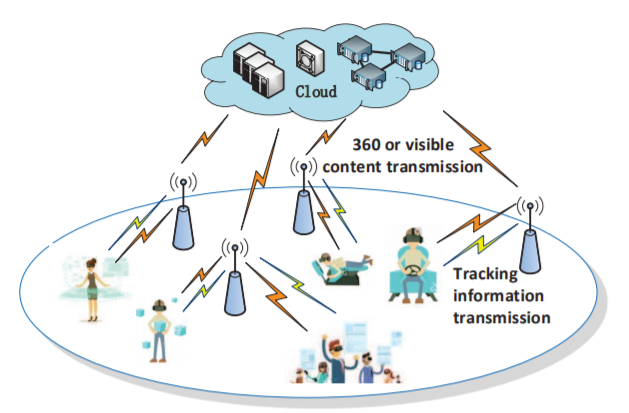Data Correlation-Aware Resource Management in Wireless Virtual Reality (VR): An Echo State Transfer Learning Approach
PubDate: Feb 2019
Teams: Beijing University of Posts and Telecommunications;Virginia Tech;, Huawei France R & D,
Writers: Mingzhe Chen, Walid Saad, Changchuan Yin, Mérouane Debbah

Abstract
In this paper, the problem of wireless virtual reality (VR) resource management is investigated for a wireless VR network in which VR contents are sent by a cloud to cellular small base stations (SBSs). The SBSs will collect tracking data from the VR users, over the uplink, in order to generate the VR content and transmit it to the end-users using downlink cellular links. For this model, the data requested or transmitted by the users can exhibit correlation, since the VR users may engage in the same immersive virtual environment with different locations and orientations. As such, the proposed resource management framework can factor in such spatial data correlation, to better manage uplink and downlink traffic. This potential spatial data correlation can be factored into the resource allocation problem to reduce the traffic load in both uplink and downlink. In the downlink, the cloud can transmit 360 contents or specific visible contents that are extracted from the original 360 contents to the users according to the users’ data correlation to reduce the backhaul traffic load. For uplink, each SBS can associate with the users that have similar tracking information so as to reduce the tracking data size. This data correlation-aware resource management problem is formulated as an optimization problem whose goal is to maximize the users’ successful transmission probability, defined as the probability that the content transmission delay of each user satisfies an instantaneous VR delay target. To solve this problem, an echo state networks (ESNs) based transfer learning is introduced. By smartly transferring information on the SBS’s utility, the proposed transfer-based ESN algorithm can quickly cope with changes in the wireless networking environment.


